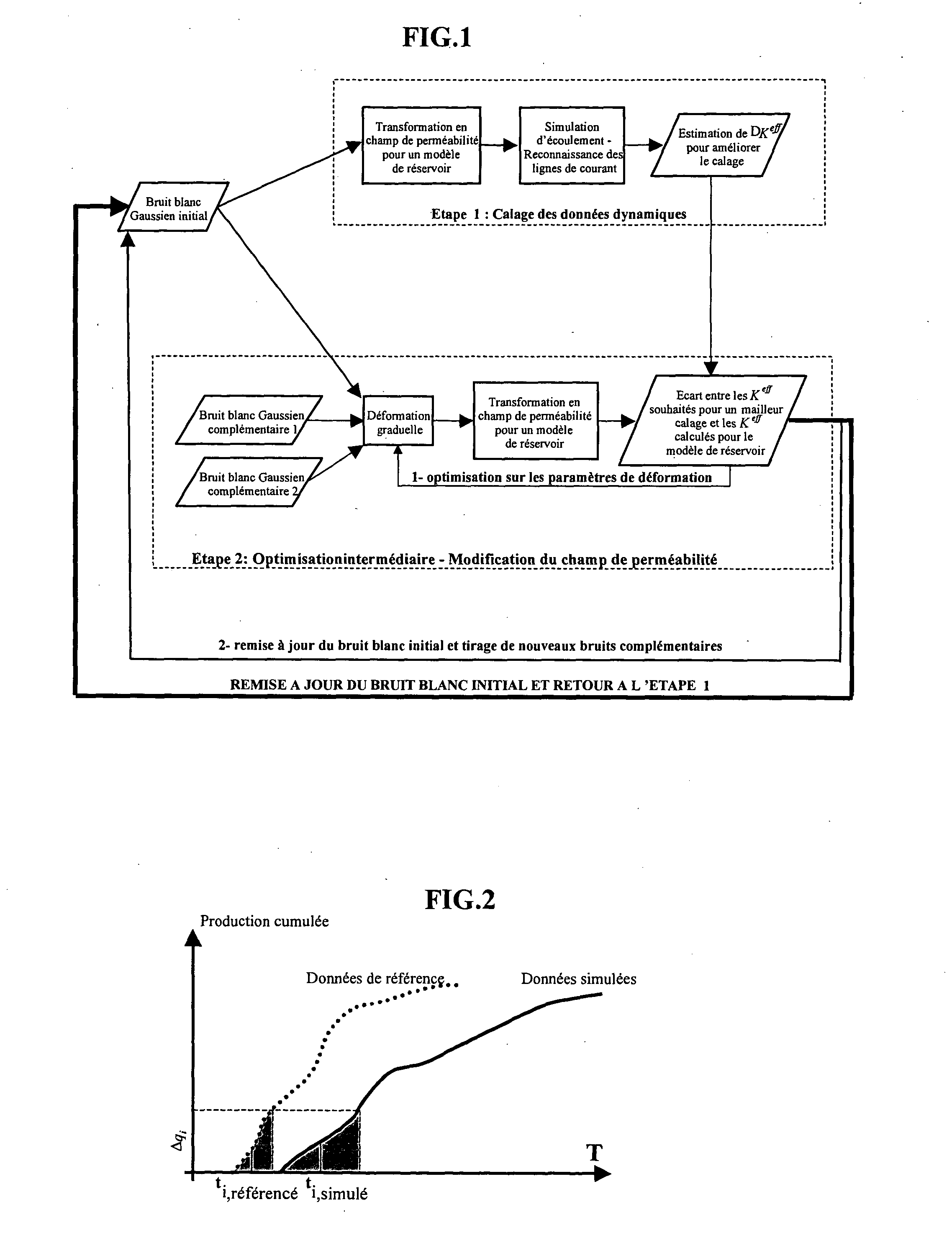Method of constraining a heterogeneous permeability field representing an underground reservoir by dynamic data
a dynamic data and reservoir technology, applied in seismology for waterlogging, using reradiation, instruments, etc., can solve the problems of destroying the coherence between the stochastic model and the realization, requiring a large number of iterations of the process, so as to reduce the number of direct flow simulations and accelerate the intermediate optimization
- Summary
- Abstract
- Description
- Claims
- Application Information
AI Technical Summary
Benefits of technology
Problems solved by technology
Method used
Image
Examples
Embodiment Construction
Traditionally, calibration of reservoir models is an iterative process wherein a flow simulation is carried out each time the reservoir is disturbed. For simplicity's sake, the numerical reservoir model is considered to come down to a realization of a stochastic model for the permeability. In other words, a flow simulation is required for any variation of the permeability field. On the contrary, the method according to the invention can propose several permeability field variations using a single flow simulation. The method according to the invention therefore has two stages (FIG. 1). During the first stage, zones of the reservoir are determined and the correction to be brought to the effective permeabilities of these zones in order to improve data calibration is estimated. Then, an optimization process is started to propagate the disturbance determined for the effective permeabilities of these zones to the permeability field representing the reservoir. The first stage requires a f...
PUM
 Login to View More
Login to View More Abstract
Description
Claims
Application Information
 Login to View More
Login to View More - R&D
- Intellectual Property
- Life Sciences
- Materials
- Tech Scout
- Unparalleled Data Quality
- Higher Quality Content
- 60% Fewer Hallucinations
Browse by: Latest US Patents, China's latest patents, Technical Efficacy Thesaurus, Application Domain, Technology Topic, Popular Technical Reports.
© 2025 PatSnap. All rights reserved.Legal|Privacy policy|Modern Slavery Act Transparency Statement|Sitemap|About US| Contact US: help@patsnap.com



